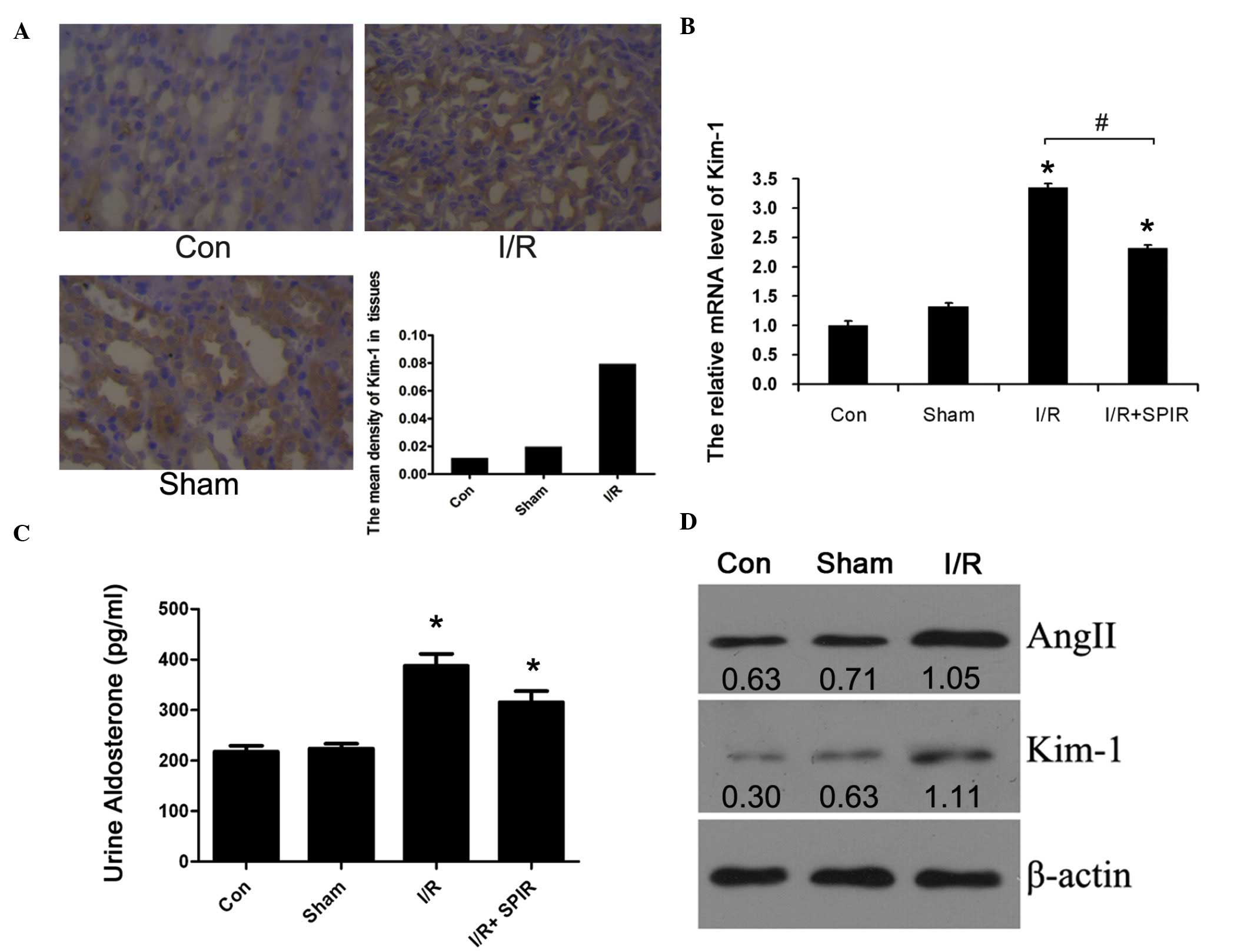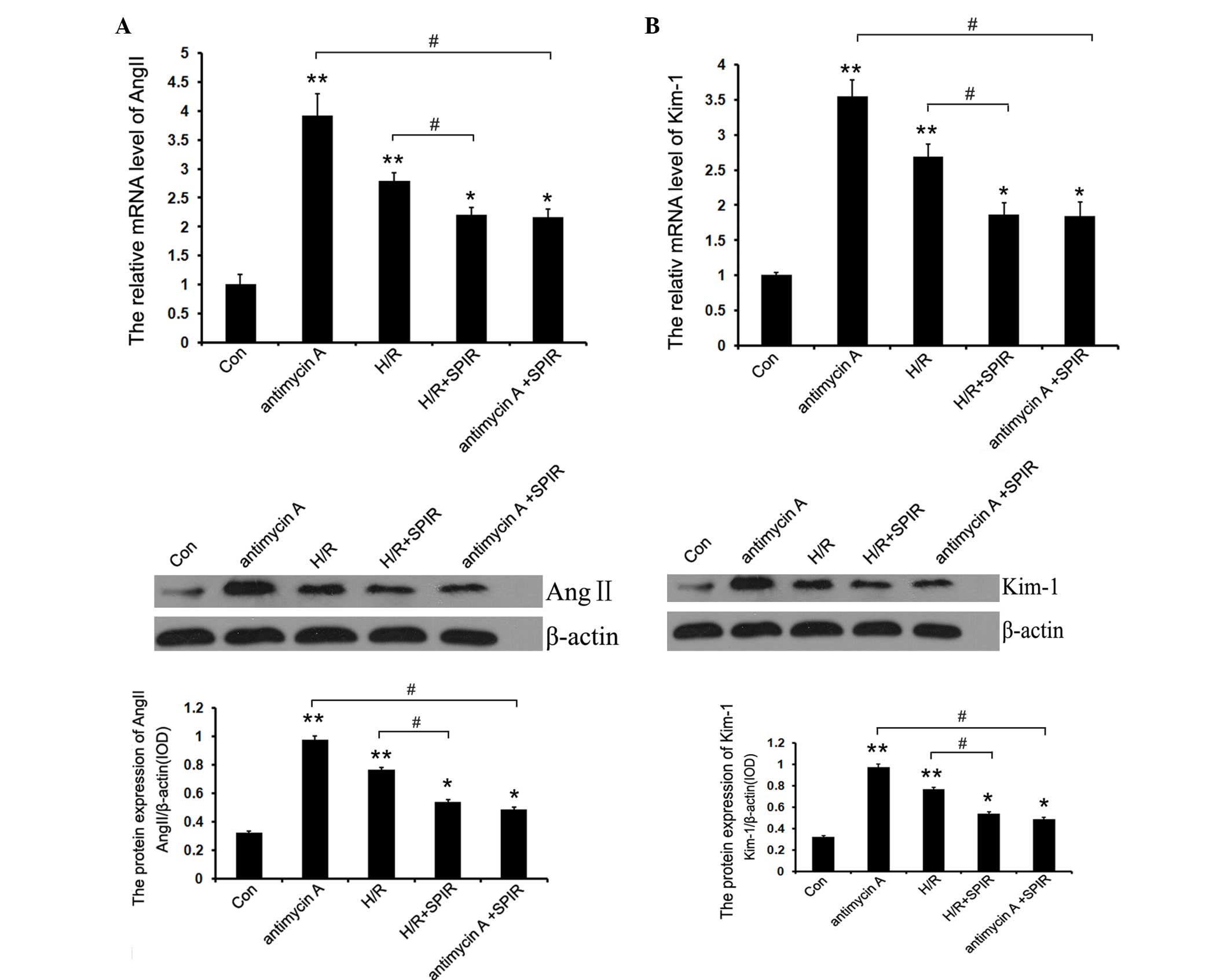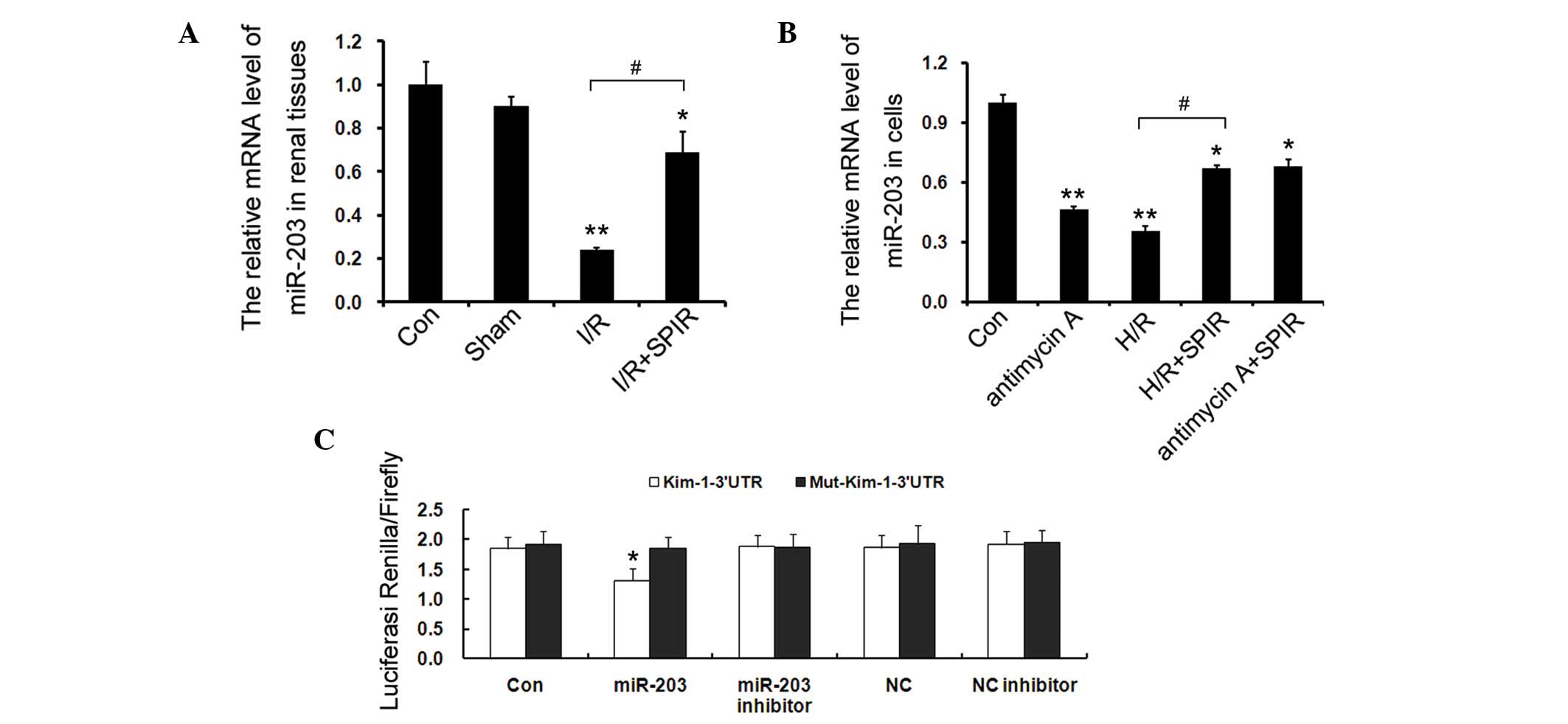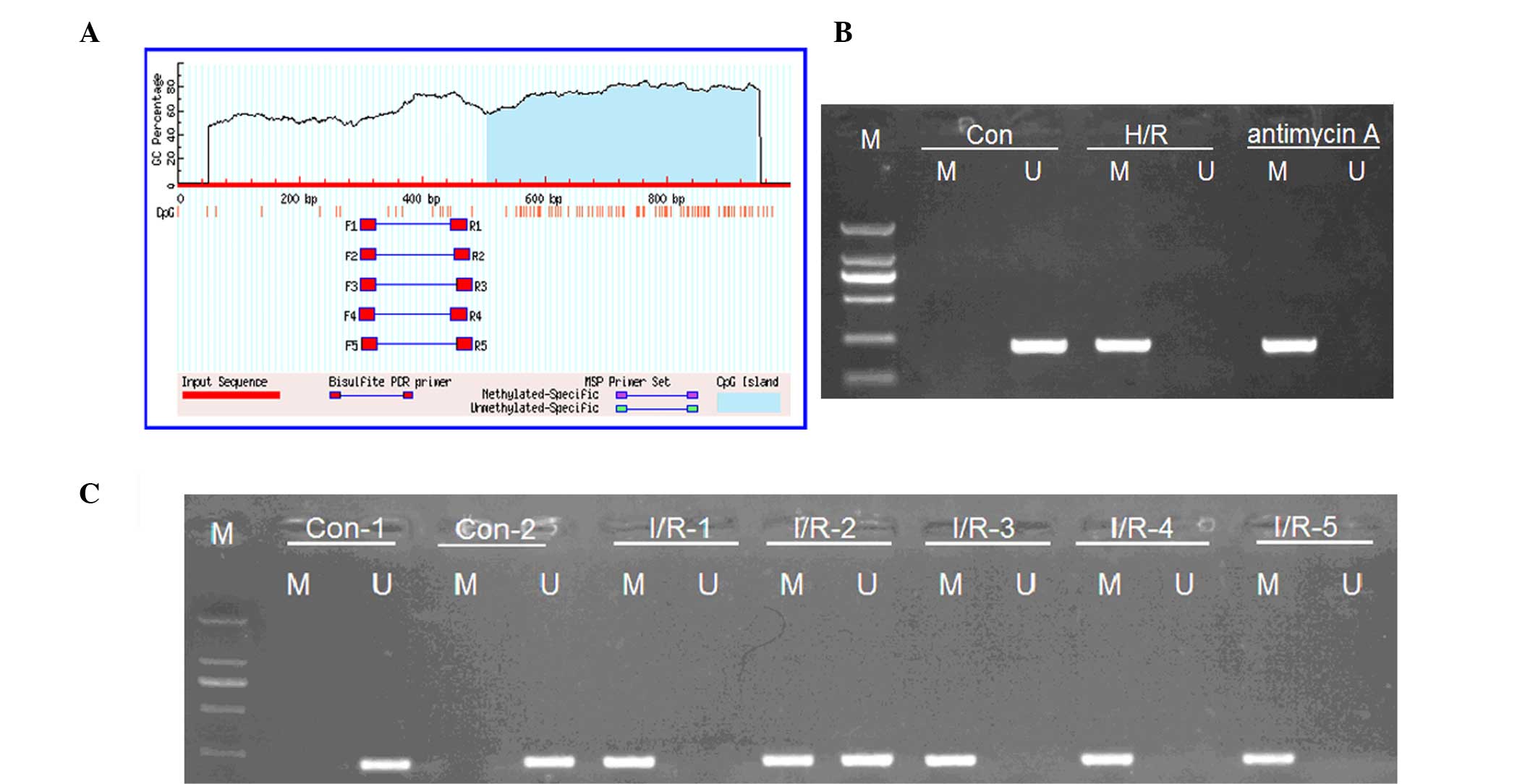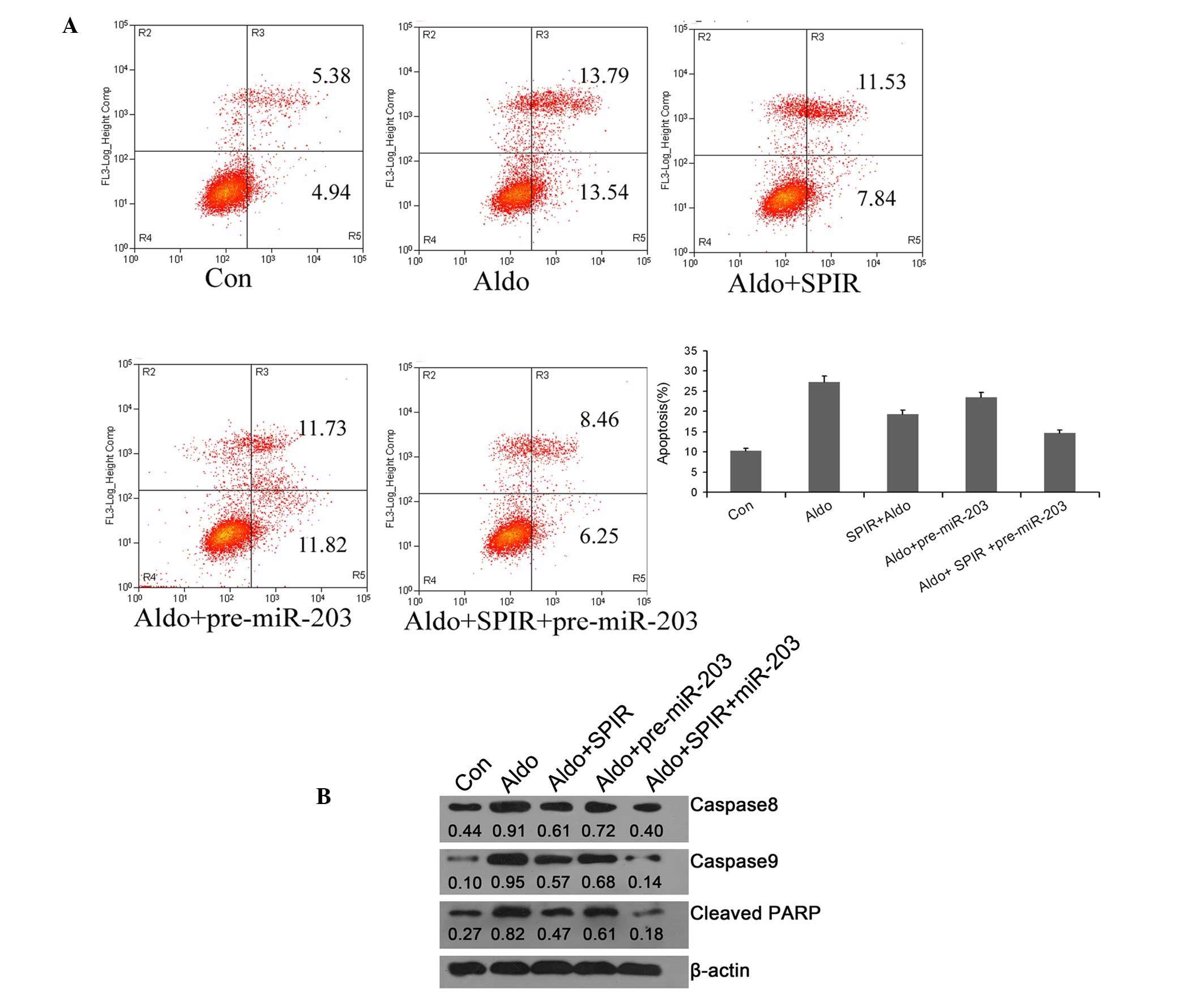|
1
|
Dellepiane S, Marengo M and Cantaluppi V:
Detrimental cross-talk between sepsis and acute kidney injury: New
pathogenic mechanisms, early biomarkers and targeted therapies.
Crit Care. 20:612016. View Article : Google Scholar : PubMed/NCBI
|
|
2
|
Harty J: Prevention and management of
acute kidney injury. Ulster Med J. 83:149–157. 2014.PubMed/NCBI
|
|
3
|
Husi H, Sanchez-Niño MD, Delles C, Mullen
W, Vlahou A, Ortiz A and Mischak H: A combinatorial approach of
proteomics and systems biology in unravelling the mechanisms of
acute kidney injury (AKI): Involvement of NMDA receptor GRIN1 in
murine AKI. BMC Syst Biol. 7:1102013. View Article : Google Scholar : PubMed/NCBI
|
|
4
|
Xu J, Jiang W, Fang Y, Teng J and Ding X:
Management of Cardiac Surgery-Associated Acute Kidney Injury.
Contrib Nephrol. 187:131–142. 2016.PubMed/NCBI
|
|
5
|
Ftouh S and Lewington A: Acute Kidney
Injury Guideline Development Group convened by the National
Clinical Guidelines Centre and commissioned by the National
Institute for Health and Care Excellence, in association with The
Royal College of Physicians' Clinic: Prevention, detection and
management of acute kidney injury: Concise guideline. Clin Med.
14:61–65. 2014. View Article : Google Scholar
|
|
6
|
Gaffney AM and Sladen RN: Acute kidney
injury in cardiac surgery. Curr Opin Anaesthesiol. 28:50–59. 2015.
View Article : Google Scholar : PubMed/NCBI
|
|
7
|
McKay DB: Intracellular pattern
recognition receptors and renal ischemia. Crit Rev Immunol.
31:297–306. 2011. View Article : Google Scholar : PubMed/NCBI
|
|
8
|
Huang CH, Lai CC, Yang AH and Chiang SC:
Myocardial preconditioning reduces kidney injury and apoptosis
induced by myocardial ischaemia and reperfusion. Eur J Cardiothorac
Surg. 48:382–391. 2015. View Article : Google Scholar : PubMed/NCBI
|
|
9
|
Prozialeck WC, Edwards JR, Lamar PC, Liu
J, Vaidya VS and Bonventre JV: Expression of kidney injury
molecule-1 (Kim-1) in relation to necrosis and apoptosis during the
early stages of Cd-induced proximal tubule injury. Toxicol Appl
Pharmacol. 238:306–314. 2009. View Article : Google Scholar : PubMed/NCBI
|
|
10
|
Waanders F, Vaidya VS, van Goor H,
Leuvenink H, Damman K, Hamming I, Bonventre JV, Vogt L and Navis G:
Effect of renin-angiotensin-aldosterone system inhibition, dietary
sodium restriction, and/or diuretics on urinary kidney injury
molecule 1 excretion in nondiabetic proteinuric kidney disease: A
post hoc analysis of a randomized controlled trial. Am J Kidney
Dis. 53:16–25. 2009. View Article : Google Scholar : PubMed/NCBI
|
|
11
|
Waanders F, van Timmeren MM, Stegeman CA,
Bakker SJ and van Goor H: Kidney injury molecule-1 in renal
disease. J Pathol. 220:7–16. 2010. View Article : Google Scholar : PubMed/NCBI
|
|
12
|
Bonventre JV: Kidney injury molecule-1
(KIM-1): A urinary biomarker and much more. Nephrol Dial
Transplant. 24:3265–3268. 2009. View Article : Google Scholar : PubMed/NCBI
|
|
13
|
Han WK, Waikar SS, Johnson A, Betensky RA,
Dent CL, Devarajan P and Bonventre JV: Urinary biomarkers in the
early diagnosis of acute kidney injury. Kidney Int. 73:863–869.
2008. View Article : Google Scholar : PubMed/NCBI
|
|
14
|
Chen C, Liang W, Jia J, van Goor H,
Singhal PC and Ding G: Aldosterone induces apoptosis in rat
podocytes: Role of PI3-K/Akt and p38MAPK signaling pathways.
Nephron Exp Nephrol. 113:e26–e34. 2009. View Article : Google Scholar : PubMed/NCBI
|
|
15
|
de Borst MH, van Timmeren MM, Vaidya VS,
de Boer RA, van Dalen MB, Kramer AB, Schuurs TA, Bonventre JV,
Navis G and van Goor H: Induction of kidney injury molecule-1 in
homozygous Ren2 rats is attenuated by blockade of the
renin-angiotensin system or p38 MAP kinase. Am J Physiol Renal
Physiol. 292:F313–F320. 2007. View Article : Google Scholar : PubMed/NCBI
|
|
16
|
Vrba L, Jensen TJ, Garbe JC, Heimark RL,
Cress AE, Dickinson S, Stampfer MR and Futscher BW: Role for DNA
methylation in the regulation of miR-200c and miR-141 expression in
normal and cancer cells. PloS One. 5:e86972010. View Article : Google Scholar : PubMed/NCBI
|
|
17
|
Kusenda B, Mraz M, Mayer J and Pospisilova
S: Re. Biomed Pap Med Fac Univ Palacky Olomouc Czech Repub.
150:205–215. 2006. View Article : Google Scholar : PubMed/NCBI
|
|
18
|
Aguado-Fraile E, Ramos E, Conde E,
Rodríguez M, Liaño F and García-Bermejo ML: MicroRNAs in the
kidney: Novel biomarkers of acute kidney injury. Nefrologia.
33:826–834. 2013.PubMed/NCBI
|
|
19
|
Lorenzen JM, Kielstein JT, Hafer C, Gupta
SK, Kümpers P, Faulhaber-Walter R, Haller H, Fliser D and Thum T:
Circulating miR-210 predicts survival in critically ill patients
with acute kidney injury. Clin J Am Soc Nephrol. 6:1540–1546. 2011.
View Article : Google Scholar : PubMed/NCBI
|
|
20
|
Du J, Cao X, Zou L, Chen Y, Guo J, Chen Z,
Hu S and Zheng Z: MicroRNA-21 and risk of severe acute kidney
injury and poor outcomes after adult cardiac surgery. PloS One.
8:e633902013. View Article : Google Scholar : PubMed/NCBI
|
|
21
|
Lan YF, Chen HH, Lai PF, Cheng CF, Huang
YT, Lee YC, Chen TW and Lin H: MicroRNA-494 reduces ATF3 expression
and promotes AKI. J Am Soc Nephrol. 23:2012–2023. 2012. View Article : Google Scholar : PubMed/NCBI
|
|
22
|
Bellinger MA, Bean JS, Rader MA,
Heinz-Taheny KM, Nunes JS, Haas JV, Michael LF and Rekhter MD:
Concordant changes of plasma and kidney microRNA in the early
stages of acute kidney injury: Time course in a mouse model of
bilateral renal ischemia-reperfusion. PloS One. 9:e932972014.
View Article : Google Scholar : PubMed/NCBI
|
|
23
|
Wilflingseder J, Sunzenauer J, Toronyi E,
Heinzel A, Kainz A, Mayer B, Perco P, Telkes G, Langer RM and
Oberbauer R: Molecular pathogenesis of post-transplant acute kidney
injury: Assessment of whole-genome mRNA and miRNA profiles. PloS
One. 9:e1041642014. View Article : Google Scholar : PubMed/NCBI
|
|
24
|
Zager RA, Johnson AC, Hanson SY and Lund
S: Ischemic proximal tubular injury primes mice to
endotoxin-induced TNF-alpha generation and systemic release. Am J
Physiol Renal Physiol. 289:F289–F297. 2005. View Article : Google Scholar : PubMed/NCBI
|
|
25
|
Tokumoto M, Lee JY, Fujiwara Y and Satoh
M: Alteration of DNA binding activity of transcription factors in
NRK-52E rat proximal tubular cells treated with cadmium. J Toxicol
Sci. 39:735–738. 2014. View Article : Google Scholar : PubMed/NCBI
|
|
26
|
Arocho A, Chen B, Ladanyi M and Pan Q:
Validation of the 2-DeltaDeltaCt calculation as an alternate method
of data analysis for quantitative PCR of BCR-ABL P210 transcripts.
Diagn Mol Pathol. 15:56–61. 2006. View Article : Google Scholar : PubMed/NCBI
|
|
27
|
Husi H and Human C: Molecular determinants
of acute kidney injury. J Inj Violence Res. 7:75–86.
2015.PubMed/NCBI
|
|
28
|
Devarajan P: Update on mechanisms of
ischemic acute kidney injury. J Am Soc Nephrol. 17:1503–1520. 2006.
View Article : Google Scholar : PubMed/NCBI
|
|
29
|
Dagher PC: Apoptosis in ischemic renal
injury: Roles of GTP depletion and p53. Kidney Int. 66:506–509.
2004. View Article : Google Scholar : PubMed/NCBI
|
|
30
|
Kaushal GP, Basnakian AG and Shah SV:
Apoptotic pathways in ischemic acute renal failure. Kidney Int.
66:500–506. 2004. View Article : Google Scholar : PubMed/NCBI
|
|
31
|
López-Andrés N, Iñigo C, Gallego I, Diez J
and Fortuño MA: Aldosterone induces cardiotrophin-1 expression in
HL-1 adult cardiomyocytes. Endocrinology. 149:4970–4978. 2008.
View Article : Google Scholar : PubMed/NCBI
|
|
32
|
White LE, Hassoun HT, Bihorac A, Moore LJ,
Sailors RM, McKinley BA, Valdivia A and Moore FA: Acute kidney
injury is surprisingly common and a powerful predictor of mortality
in surgical sepsis. J Trauma Acute Care Surg. 75:432–438. 2013.
View Article : Google Scholar : PubMed/NCBI
|
|
33
|
Sawada H, Naito Y, Oboshi M, Iwasaku T,
Okuhara Y, Morisawa D, Eguchi A, Hirotani S and Masuyama T: Iron
restriction inhibits renal injury in aldosterone/salt-induced
hypertensive mice. Hypertens Res. 38:317–322. 2015. View Article : Google Scholar : PubMed/NCBI
|
|
34
|
Chun TY, Chander PN, Kim JW, Pratt JH and
Stier CT Jr: Aldosterone, but not angiotensin II, increases
profibrotic factors in kidney of adrenalectomized stroke-prone
spontaneously hypertensive rats. Am J Physiol Endocrinol Metab.
295:E305–E312. 2008. View Article : Google Scholar : PubMed/NCBI
|



